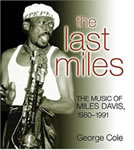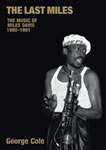As a celebration of the anniversary of Miles’s 80th birthday, here’s a list of various musical facts.
- There were three guitarists on The Man With The Horn album – Mike Stern, Barry Finnerty and Randy Hall.
- The track “The Man With The Horn” was one of the few Miles tracks to feature vocals (others include “Nothing Like You” and “Blow.”)
- All but one track on The Man With The Horn (“Shout”) was named after somebody.
- Every one of the four young Chicagoans who played on The Man With The Horn went on to work with Miles later on in the decade, with all but one of them (Randy Hall), joining Miles’s band.
- Producer Teo Macero and engineer Stanley Tonkel had worked with Miles in the 1960s and 1970s.
- Miles had planned to work with guitarist Pete Cosey, but the project was abandoned.
- Miles talent-spotted percussionist Mino Cinelu at a club in Harlem.
- Saxophonist Bill Evans recommended Marcus Miller, Mike Stern and John Scofield.
- No one seems to know the origins of “Jean-Pierre”, one of Miles’s best known tunes of the 1980s.
- Columbia has originally planned to release the full concert Miles’s band played at the Avery Fisher Hall on July 5 1981, but in the end, only one tune (“Back Seat Betty”) was included.
- “Fast Track” is another name for “Aida.”
- The Star People album contains two live tracks “Come Get It” and “Speak.”
- At the time of writing, “Speak” is the only official release of the John Scofield/Mike Stern line-up and to feature bassist Tom Barney.
- Star People was the last time Teo Macero and Gil Evans worked with Miles.
- “Freaky Deaky” was the first studio track to be solely produced by Miles.
- The famous thumbed bass on the track “Decoy” was as a result of a last-second instruction by Miles to bassist Darryl Jones.
- Branford Marsalis got to record with Miles as a result of him playing in a band that opened for Miles at a concert in St Louis.
- Mlles named “Decoy” after a track that had been written for The Rolling Stones – he only used the title and not the music.
- Another version of “Freaky Deaky” had Miles playing horn on it.
- Bill Evans only apears on the two live tracks on Decoy – “What It Is” and “That’s What Happened.”
- Violinist Viktoria Mullova recorded five versions of “Robot 415.”
- After recording the Decoy album, Miles planned an album of pop ballads that would be arranged by Gil Evans. This was later abandoned.
- Only three tracks from the planned pop album: “Time After Time,” “Human Nature” and “Something’s On Your Mind” ended up on the album that became “You’re Under Arrest.”
- Al Foster was replaced by Miles’s nephew and drummer Vince Wilburn Jr on the You’re Under Arrest album.
- Guitarist John McLaughlin guested on two 1980s albums – Aura and You’re Under Arrest.
- Miles recorded at least several studio versions of “Time After Time” including one that lasted almost nine minutes.
- Miles’s artwork featured on a number of albums included Star People, Decoy, You’re Under Arrest and Amandla. He also did the artwork for one 12-inch version of “Time After Time.”
- Miles played at a concert featuring the music of Aura in Copenhagen in December 1984.
- Aura was left in the vaults for more than four years.
- When Miles moved to Warner Bros in 1985, he was planning to record an album called Rubberband, which was to include vocal appearances by Al Jarreau and Chaka Khan. The album was scrapped.
- Miles recorded a Prince track “Can I Play With U?” which was also abandoned.
- Marcus Miller was originally only going to record three tracks with Miles, but was later asked to write almost all of Tutu.
- Toto’s Steve Porcaro (who co-wrote “Human Nature”) planned to record two tracks with Miles, but the project was never completed.
- George Duke wrote several tracks for Miles, but ony one was used on Tutu, “Backyard Ritual.” The other tracks were recorded by Diane Reeves and the group 101 North, which Duke produced.
- Omar Hakim was the only session musician to play on Miles’s first three Warner Bros albums.
- “Portia” was a female’s name that Marcus Miller liked, but it isn’t named after anyone in particular.
- The album Tutu was originally going to be called Perfect Way.
- Violinist Michal Urbaniak, who appears on “Don’t Lose Your Mind,” was first spotted by Miles on The Johnny Carson Show.
- Miles not only recorded Scritti Politti’s “Perfect Way” but guested on their track “Oh Patti.”
- Tutu won two Grammy awards.
- Spike Lee directed the Tutu videos.
- Siesta saw Miles reunited with guiaritst John Scofield for the title track – Miles asked for John.
- “Conchita” was used by US skater Nancy Kerrigan for her routine in the 1992 Olympics.
- Amandla was originally going to be recorded in the same way as Tutu, with Marcus Miller playing most of the instruments, but later on, it was decided to use more musicians.
- The George Duke track “Cobra” is so-called because the shape of Miles’s head reminded him of a snake.
- Amandla saw Miles playing with several members from Miles’s previous bands – Al Foster, Mino Cinelu and the late Don Alias (and of course, Marcus Miller!).
- “Catembe,” “Jo-Jo,” “Jilli”, “Hannibal” and “Mr Pastorius” were all named after people or places.
- Amandla marked the last time Miles worked with Marcus Miller and Tommy LiPuma.
- Saxophonist Rick Margitza, who played on “Jo-Jo” later joined Miles’s for a short while in the summer of 1989.
- Miles recorded a number of soundtracks in this period – Siesta, Dingo, The Hot Spot, Scrooged and Street Smart.
- Public Enemy’s Chuck D and Flavor Flav were considered by Miles for the album that became Doo-Bop.
- Miles had planned to include a number of tunes by Prince on Doo-Bop, including “Nothing Compares 2 U.”
- Miles’s last gig was at the Hollywood Bowl on 25 August 1991. A little over a month later, he was dead.
- The Live Around The World album contains the only offically released tune from Miles’s last concert – an edited version of ” Hannibal.”
- Two tracks on Doo-Bop, “Fantasy” and “High Speed Chase” were recorded after Miles’s death and used trumpet recordings made in 1985.
- Miles guested on a number of artists albums including Toto, Scritti Politti, Cameo and Shirely Horn.
- Miles also appears on solo albums by Marcus Miller and Kenny Garrett.
- Miles’s band line-ups often had dual instrument line-ups including Mike Stern and John Scofield (guitar), Steve Thornton and Marilyn Mazur (percussion), Robert Irving III and Adam Holzman, Adam Holzman and Joey DeFrancesco, Kei Akagi and John Beasley, Adam Holzman and Kei Akagi. (keyboards). Two saxophone line-ups consisted of Bob Berg and Donald Harrison, Bob Berg and Gary Thomas, and Gary Thomas and Kenny Garrett. And if you want to be technical, you could also add a number of dual-bassist line-ups as Foley plays lead bass and not guitar!
- Robert Irving III was the first specialist keyboardist in Miles’s band for ten years (although Miles was not playing for half of this period!).
- Bassist Angus Thomas, who played with Miles in late 1985, taught Darryl Jones how to play bass.
- Marilyn Mazur was the only female member of a Miles Davis band.
- Robben Ford was introduced to Miles by Tommy LiPuma.
- Between April 1986 and May 1987 Miles had seven guitarists.
- Foley got the gig as result of Miles hearing Marcus Miller playing a Foley demo during a phone call.
- Carlos Santana joined Miles on-stage at an Amnesty concert in June 1986.
- Mino Cinelu, Darryl Jones, Mike Stern and Marilyn Mazur all left Miles’s bands and rejoined at a later date.
- Chaka Khan, David Sanborn and George Duke all sat in with Miles’s bands at Montreux Jazz concerts.
- Bassist Darryl Jones went on play with The Rolling Stones, Bassist Richard Patterson joined David Sanborn’s band, while bassist Benny Rietveld joined Santana.
- John Bigham’s first instrument is guitar, but he played percussion with Miles’s band in late 1989.
- Miles’s youngest son Erin played percussion in the band in 1990, after he left, Miles dispensed with a specialist percussionist – the first time his band lacked one.
- Miles and Kenny Garrett played together in Tokyo in December 1990 at a John Lennon tribute concert. They played over a backing track of “Strawberry Fields Forever.”
- Miles recorded the track “Dune Mosse” with Italian singer Zucchero, but the track wasn’t released for sixteen years.
- Miles recorded with another Italian artist, Paolo Rustichelli.
- Simply Red singer Mick Hucknell and guitarist/producer Daniel Lanois (who’s worked with Bob Dylan and U2) both claim that Miles expressed an interest in working with them.
- Shortly before he died, Miles was planning to work with Brazillian artist Ivan Lins.
- Keith Jarrett, Freddie Hubbard, Joe Henderson, Teo Macero, Shirley Horn, Dave Liebman and four members of the second great quintet (Herbie Hancock, Wayne Shorter, Ron Carter and Tony Williams) are amongst those who recorded tribute albums to Miles.
- “Tutu” is the most covered song from this period. Artists that have recorded versions include: Chuck Brown and The Soul Searchers, Hotel X, Cassandra Wilson, World Saxophone Quartet, Marcus Miller, plus two various artists line-ups.
- The Miles tribute concert in July 1991 in Paris included guest appearances from Herbie Hancock, Joe Zawinul, Dave Holland, Steve Grossman, Chick Corea and the late Jackie McLean.
- Deron Johnson was the last member of a Miles Davis band to record in the studio with Miles (he played keyboards on several Doo-Bop tracks).
- Foley, Kenny Garrett, Deron Johnson, Richard Patterson and Ricky Wellman were the last members of a Miles Davis band – his incredible musical lineage ends here.
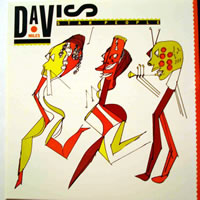
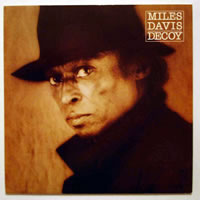
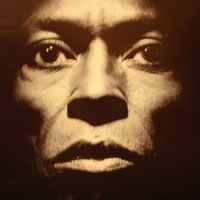
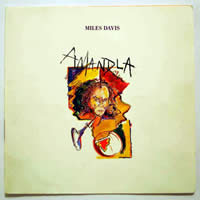
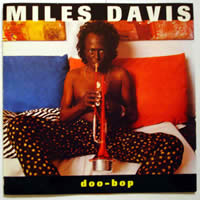
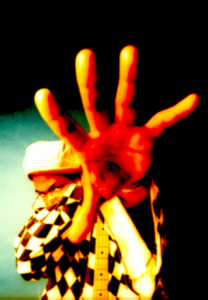
Foley
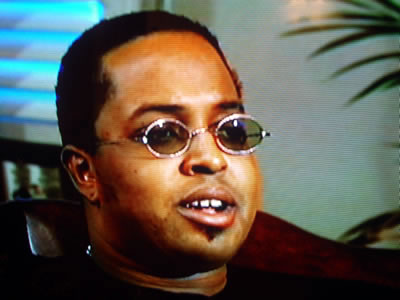
Erin Davis
